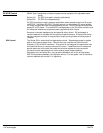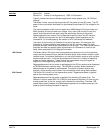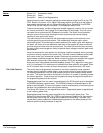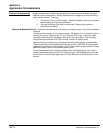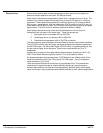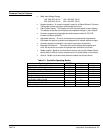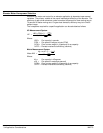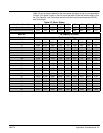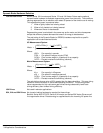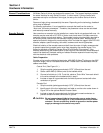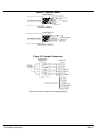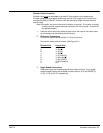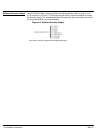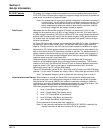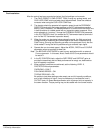
Section 1
General Information
3-6 Application Considerations MN770
Dynamic Brake Hardware Selection
15H and 18H Drives Baldor Series 15H Inverters and Series 17H and 18H Vector Drives require optional
dynamic brake hardware to dissipate regenerative power from the motor. The conditions
causing regeneration for an elevator occur about 50 percent of the time the car is moving.
This regenerative power is produced when:
1. When a lightly loaded car is being raised.
2. When a fully loaded car is being lowered.
3. Whenever the car is decelerated.
Regenerative power is calculated in the same way as the motor and drive horsepower
except that efficiency losses decrease the amount of energy to be absorbed.
The watt rating of the Dynamic Brake (or REGEN) hardware required for a specific
application can be calculated as follows:
US Measurement System
Watts +
ǒ
LBS x FPM x [1 * (
OCW
100
)] x %EFF
88
Ǔ
x 1.25
Where:
LBS =
Car capacity in pounds
FPM = Car speed in feet per minute (FPM)
OCW = Over counter weight in %(percent) of car capacity
%EFF = Elevator mechanical efficiency (decimal)
Metric Measurement System
Watts +
ǒ
Kgxmńsx[1* (
OCW
100
)] x %EFF
0.202
Ǔ
x 1.25
Where:
Kg = Car capacity in Kilograms
m/s = Car speed in meters per second)
OCW = Over counter weight in %(percent) of car capacity
%EFF = Elevator mechanical efficiency (decimal)
The calculations show a value of 25% greater than the base calculation. This over sizing
allows for normal variations in values and operating conditions. The resulting power
value compensates for high ratio worm gear drives having substantially lower back
driving efficiency than forward driving efficiency.
19H Drives Not used in elevator applications.
20H, 21H and 22H Drives No dynamic braking hardware is required for these drives.
Baldor’s Series 20H DC SCR, Series 21H Inverter and Series 22H Vector Drives are all
line regenerative drives. Excess energy is supplied back to the incoming AC power line.



